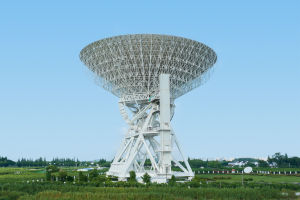SpaceX's Starship rocket embarked on its latest test flight Thursday, showcasing the company’s advancements in aerospace technology
However, the mission ended in disappointment when the spacecraft was destroyed just minutes after liftoff.
The massive 400-foot (123-meter) rocket launched from Boca Chica Beach, Texas, carrying 10 satellites for testing deployment procedures. While the spacecraft reached an altitude of 90 miles (146 kilometers) and a velocity of 13,245 mph (21,317 kph), contact was lost just 8 1/2 minutes into the flight. SpaceX later confirmed the spacecraft’s destruction, describing the event as a “rapid unscheduled disassembly.”
A Milestone and a Setback
Despite the ultimate failure, the test flight featured a significant achievement: SpaceX successfully executed a booster recovery using its launch tower’s mechanical “chopsticks” arms. The descending booster hovered over the launch pad before being gripped by the massive arms—a feat previously accomplished only once.
“It was great to see a booster come down, but we are obviously bummed out about the ship,” said SpaceX spokesman Dan Huot, emphasizing the experimental nature of the mission.
The spacecraft, designed as an upgraded model debuting on this flight, was meant to complete a near-global loop, reentering the atmosphere over the Indian Ocean. Unfortunately, it fell far short of its intended path.
Preliminary Analysis and Future Plans
SpaceX founder Elon Musk shared early insights into the mishap, citing a potential fuel leak that may have caused pressure buildup above the engine firewall. To address the issue, Musk announced plans to add fire suppression systems, enhance venting, and double-check for leaks in future launches.
This was the seventh test flight for Starship, the world’s largest and most powerful rocket. Improvements for this demo included enhanced spacecraft features and a fleet of satellite mockups designed to replicate the size and functionality of SpaceX’s Starlink internet satellites.
Musk envisions Starship as the cornerstone of SpaceX’s future missions, including launching Starlinks, deploying other satellites, and eventually carrying human crews. NASA has already reserved two Starships for its Artemis program to land astronauts on the moon later this decade. Musk’s ultimate goal remains Mars exploration.
A Day of Contrasts in Space Exploration
Coincidentally, another major space milestone occurred earlier in the day. Blue Origin, the rocket company founded by billionaire Jeff Bezos, successfully launched its supersized New Glenn rocket from Florida.
The mission placed an experimental satellite into orbit, but the first-stage booster missed its target landing on a floating platform in the Atlantic, resulting in its destruction.
Looking Ahead
The Starship failure underscores the challenges of pioneering reusable spacecraft and achieving ambitious goals in space exploration.
As SpaceX works to address the issues from this test flight, the company remains focused on refining its technology for future successes. For now, the thrilling booster catch serves as a reminder of the strides SpaceX is making, even amid setbacks.


